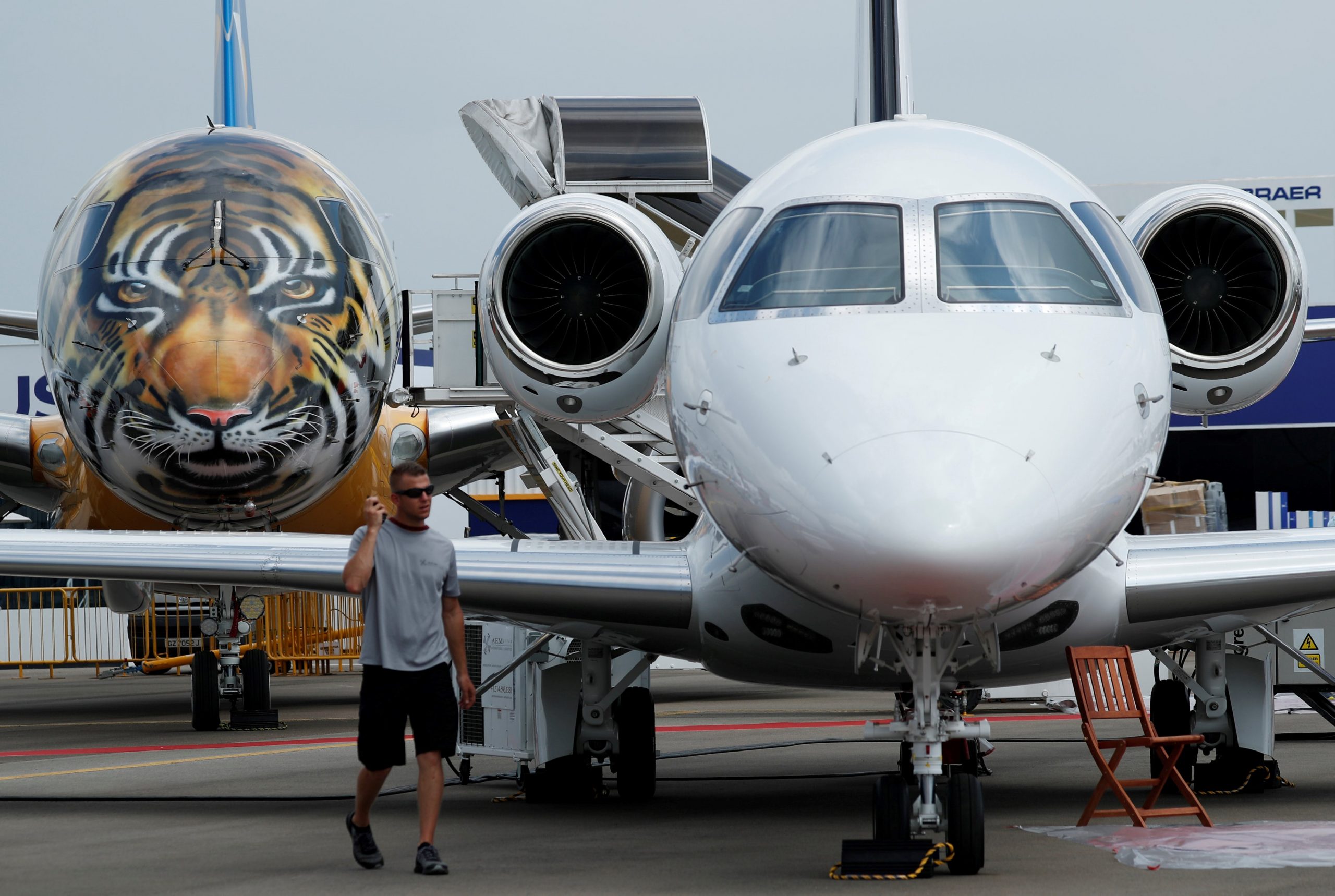With Boeing BA -3.26%decrease; red down pointing triangle in the throes of its latest crisis, one of its smaller rivals, Embraer ERJ -2.07%decrease; red down pointing triangle, is exploring options for a new model to challenge the duopoly for large jets that has dominated the industry for almost three decades.
Internal assessments conducted by Embraer have determined that the Brazilian company has the technological know-how and manufacturing might to develop a next-generation narrow-body aircraft, its first in that market segment, according to people familiar with the company’s strategy and planning. Embraer has a market value of around $5 billion and specializes in regional and business jets.
The plane would compete head-on with the successors to Boeing’s 737 MAX and Airbus’s A320 in a category that is key for both manufacturers. Greenlighting the project would also represent a potentially make-or-break bet: New aircraft programs typically cost tens of billions of dollars to develop, can take more than a decade from inception to entering service and regularly don’t get to market.
While the plans are still in their infancy and a final decision hasn’t been made, the company has been laying the groundwork, including assessing potential payload and range requirements. Embraer has also sounded out potential financial and industrial partners that the company would need, the people said, including Saudi Arabia’s Public Investment Fund and manufacturing firms in Turkey, India and South Korea.
A spokesman for Embraer said that while the company “certainly has the capability to develop a new narrow-body aircraft,” it doesn’t have any plans for a sizable new project at this time and is focused on selling its existing models.
Embraer’s ambitions have firmed in recent months with Boeing in turmoil after a 737 MAX jet operated by Alaska Airlines lost a fuselage panel midflight, the people said. The accident prompted U.S. air-safety agencies to put limits on Boeing’s manufacturing facilities and led to an executive shake-up, including the resignation of Chief Executive David Calhoun by the end of the year.
Boeing’s troubles since the grounding of its 737 MAX in 2019 have already led it to bleed market share to rival Airbus at a time when airlines across the globe are on a postpandemic spending spree. Boeing executives had previously planned to try to claw back some of those losses by beating Airbus to the market with a next-generation aircraft, according to people familiar with Boeing’s planning.
Boeing doesn’t have a firm plan for how it will replace its decades-old 737 line. The company has said it could launch a new aircraft in the middle of the next decade, similar to Airbus’s current timeline, but Calhoun has since said that a decision will fall to a future Boeing CEO.
New aircraft programs require long lead times to develop, prepare supply chains and win regulatory signoff. Calhoun has said the company would need about $50 billion to develop a successor to the 737 MAX, cash that the debt-laden manufacturer currently doesn’t have. Boeing, which this past week said it had burned through nearly $4 billion in its most recent quarter, ended 2023 with a net debt of $52.3 billion.
A new model would also mark a satisfying reprisal for Embraer after Boeing unilaterally withdrew from a $4 billion deal to acquire the Brazilian company’s commercial jet business four years ago. Embraer is still awaiting findings from an arbitration it filed at the International Chamber of Commerce after Boeing abandoned the deal.
“I’ve talked to everyone at Boeing that I can possibly address, and the message is the same: Get your act together,” American Airlines CEO Robert Isom—one of Embraer’s biggest customers—said on a call last week. He later said that Embraer comparatively has “delivered day in and day out throughout the pandemic no matter the concerns of their supply chain” and that other manufacturers “can learn a lot from them.”
To be sure, many new aircraft programs don’t succeed. Mitsubishi Heavy Industries, for example, in 2023 pulled the plug on a 16-year project to develop an all-new regional jet. In 2017, Bombardier was pushed into handing its loss-making C Series aircraft program to Airbus for $1 after Boeing petitioned the U.S. Department of Commerce to place heavy import duties on the new model.
Embraer itself doesn’t currently manufacture an aircraft that matches the size and range of Boeing’s or Airbus’s popular narrow-bodies—jets that are defined by their single aisle and which form the backbone of the global aviation sector. Its largest model, the E2-195 regional jet which entered service in 2018, seats a maximum of 146 passengers compared with a maximum of 172 seats on Boeing’s smallest narrow-body, the 737 MAX 7.
Still, the Brazilian company could use aspects of the design and technology from the E2 as the basis for the new aircraft, helping to subsidize some of the billions of costs if it went ahead with an all-new design.
Embraer is still a relatively small player in the world of aircraft manufacturing compared with Boeing and Airbus. The company last year delivered 181 aircraft, with Boeing delivering 528 and Airbus delivering 735 jets to customers.
Airbus has said it is progressing toward bringing its own new narrow-body to the market in the second half of the 2030s. The European plane maker, the world’s biggest, has been exploring multiple options for upgrades that could boost fuel efficiency by 20% to 25% compared with the current A320neo model, including new engine and wing designs. The company has also long touted the possibility of developing a stretched version of its A220—the renamed C Series aircraft it picked up from Bombardier in 2017.
Summer Said contributed to this article.



